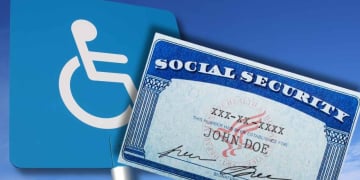The Supplemental Nutrition Assistance Program (SNAP) makes it easier for U.S. residents to purchase food to maintain good health, especially for low-income families in Texas, one of the states with the largest populations of SNAP recipients in the country.
SNAP funds are specifically designated for the purchase of food for human consumption. Enrollees can purchase, in addition to fresh or non-perishable food, seeds to grow a garden using these benefits to increase the amount they can buy with this money.
How do you receive SNAP benefits in Texas?
SNAP deposits are loaded monthly onto the Lone Star card. This card works similarly to a debit card at authorized retailers. The card is accepted at any store participating in the SNAP program. Its use is restricted to the purchase of eligible food items.
The program establishes clear limitations on the use of its benefits. These funds cannot be used to purchase non-food items, such as tobacco or cigarettes, or even pet food. The purchase of alcoholic beverages or medications with SNAP funds is also prohibited.
Purchasing non-food or non-drinkable items may result in permanent suspension of benefits, as this is considered a violation of federal program regulations. Benefits also do not cover any food bills owed by the beneficiary.
There is an additional option for participants: they can use their food stamp money to purchase food online. This option offers greater accessibility for certain beneficiaries with mobility disabilities. Online purchases follow the same restrictions as in-person purchases, with the same prohibited and permitted items.
Eligibility and population requirements for SNAP benefits
Eligible individuals in low-income households are the program’s target population, both at the federal level and at the local level in each county. Eligibility depends on factors such as income, household size, and assets. There are specific rules for adults without dependent children.
Most adults between the ages of 18 and 52 without dependent children face time limits. They can only receive SNAP benefits for three months in a three-year period. This rule seeks to encourage continued labor force participation.
There are exceptions to the time limit for childless adults. “The benefit period could be longer if the person works at least 20 hours a week,” explains a US Department of Agriculture official. Participation in employment or training programs also extends eligibility.
Some groups are exempt from strict work requirements. Certain adults may not have to work to receive benefits, such as people with disabilities or who are pregnant. Medical documentation is often required for these exceptions to prove eligibility.
Households composed exclusively of older adults or people with disabilities have special options. They can access the Texas Streamlined Application Project (TSAP). This project significantly streamlines the administrative process.
SNAP benefit payment amounts and dates in Texas in June
The SNAP distribution system in Texas is organized based on the latest eligibility group (EDG) numbers. In the coming days, payments will be distributed as follows:
- June 9: EDGs ending in 5
- June 11: EDGs ending in 6
- June 12: EDGs ending in 7
- June 13: EDGs ending in 8
- June 15: EDGs ending in 9
All of these households in the above payment groups were certified before June 1, 2020. After that date, certified households receive payments between the 16th and 28th of any month.
Financial support varies depending on household composition. The maximum monthly SNAP benefit for one person is $291. Two-person households receive up to $535 per month. Three-person households receive $766.
For four people, the monthly benefit is $973. Families of five receive $1,155, and eight beneficiaries living together could get up to $1,756. For each additional person beyond eight, $219 is added to the monthly benefit. These amounts are updated annually based on inflation.




